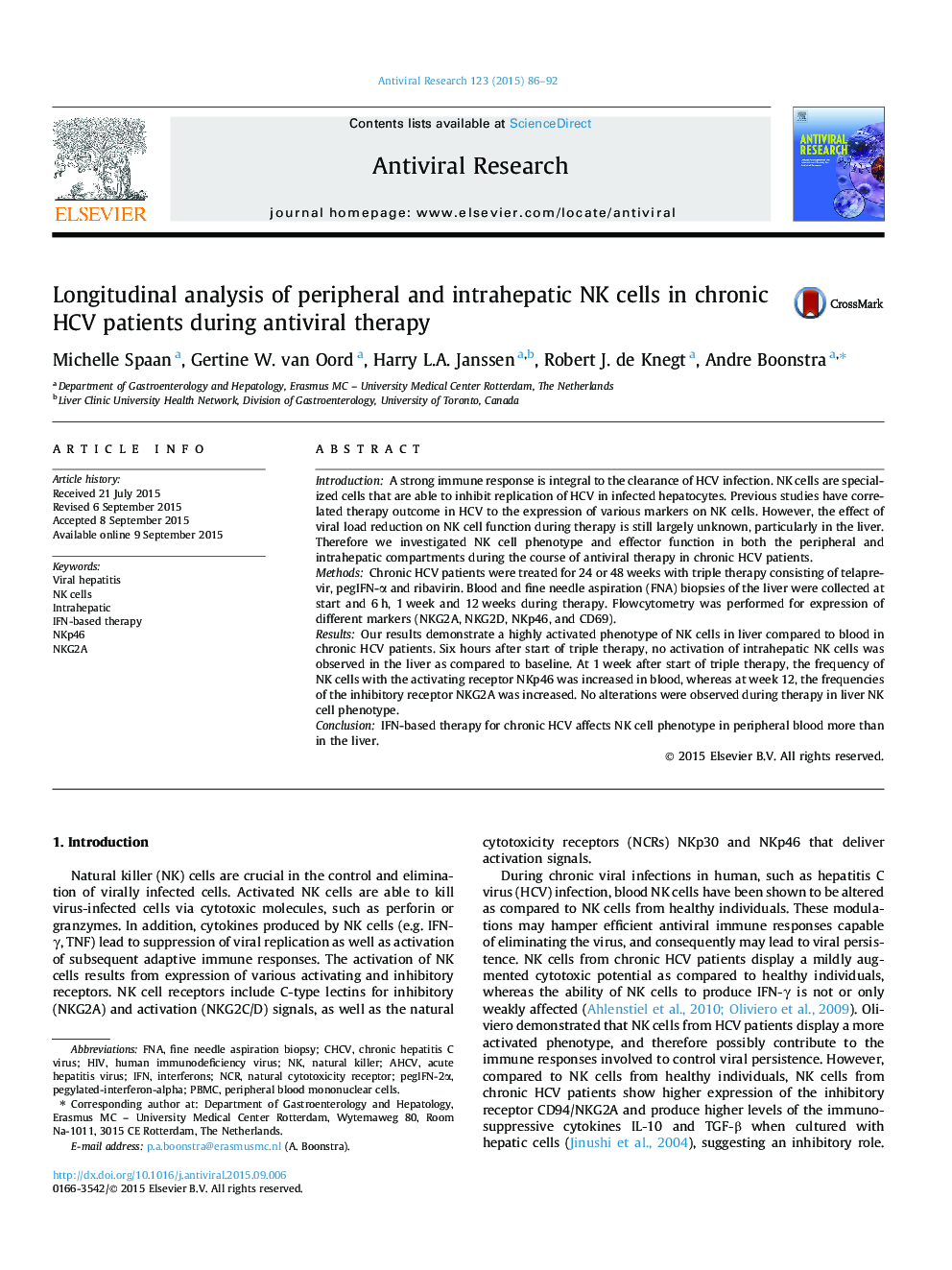| کد مقاله | کد نشریه | سال انتشار | مقاله انگلیسی | نسخه تمام متن |
|---|---|---|---|---|
| 2509768 | 1557820 | 2015 | 7 صفحه PDF | دانلود رایگان |

• NK cells are important in the defense against viral infections.
• Fine needle aspiration biopsies are a valuable tool to longitudinally characterize the phenotype of leukocytes in the liver.
• NK cells are highly activated in the liver compared to blood.
• During triple therapy for HCV first activation signals, but subsequently inhibitory signals on NK cells are induced.
• Triple therapy for chronic HCV affects the phenotype of blood NK cells more than liver NK cells.
IntroductionA strong immune response is integral to the clearance of HCV infection. NK cells are specialized cells that are able to inhibit replication of HCV in infected hepatocytes. Previous studies have correlated therapy outcome in HCV to the expression of various markers on NK cells. However, the effect of viral load reduction on NK cell function during therapy is still largely unknown, particularly in the liver. Therefore we investigated NK cell phenotype and effector function in both the peripheral and intrahepatic compartments during the course of antiviral therapy in chronic HCV patients.MethodsChronic HCV patients were treated for 24 or 48 weeks with triple therapy consisting of telaprevir, pegIFN-α and ribavirin. Blood and fine needle aspiration (FNA) biopsies of the liver were collected at start and 6 h, 1 week and 12 weeks during therapy. Flowcytometry was performed for expression of different markers (NKG2A, NKG2D, NKp46, and CD69).ResultsOur results demonstrate a highly activated phenotype of NK cells in liver compared to blood in chronic HCV patients. Six hours after start of triple therapy, no activation of intrahepatic NK cells was observed in the liver as compared to baseline. At 1 week after start of triple therapy, the frequency of NK cells with the activating receptor NKp46 was increased in blood, whereas at week 12, the frequencies of the inhibitory receptor NKG2A was increased. No alterations were observed during therapy in liver NK cell phenotype.ConclusionIFN-based therapy for chronic HCV affects NK cell phenotype in peripheral blood more than in the liver.
Journal: Antiviral Research - Volume 123, November 2015, Pages 86–92